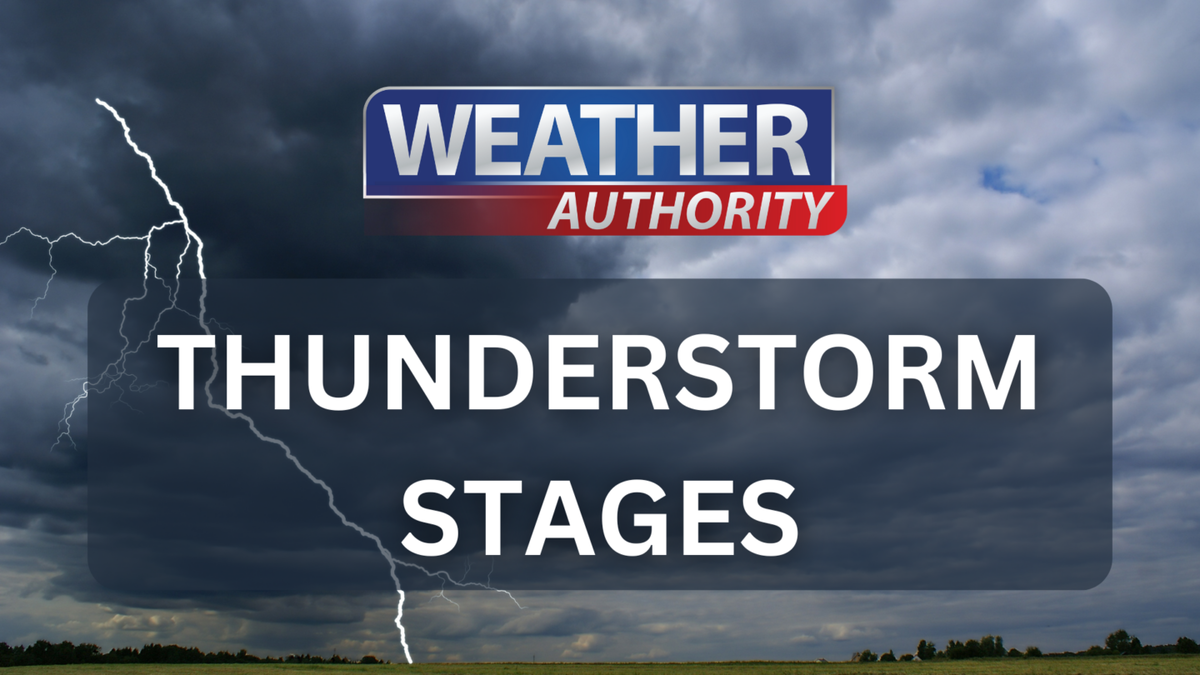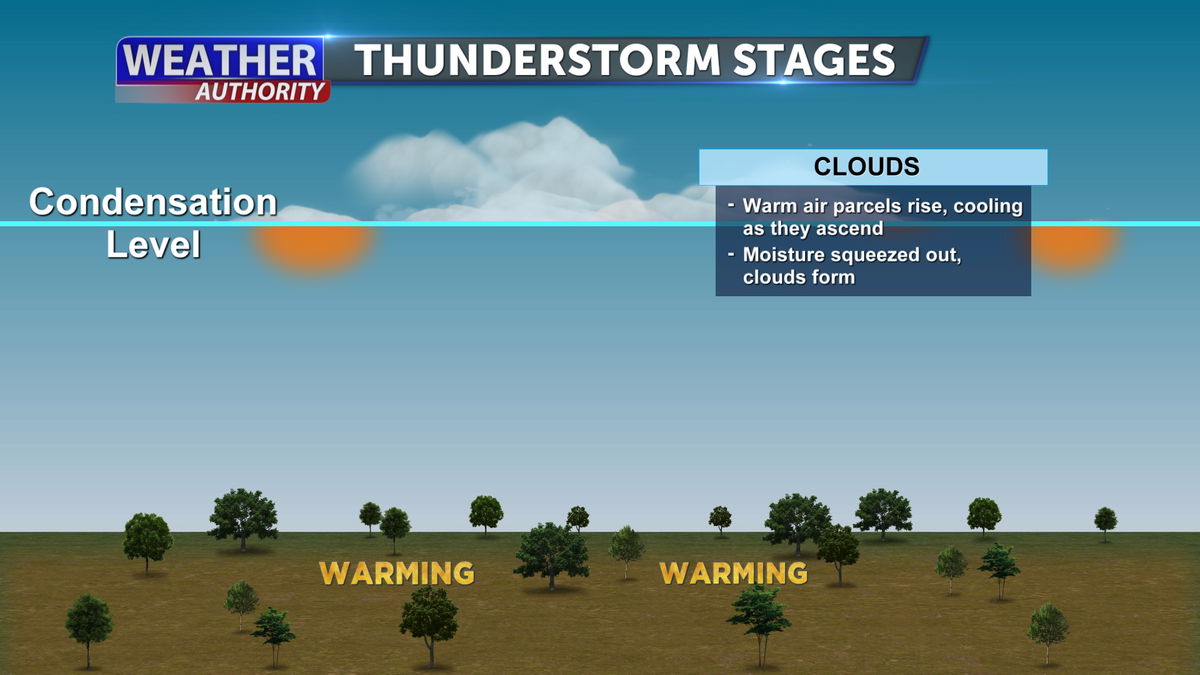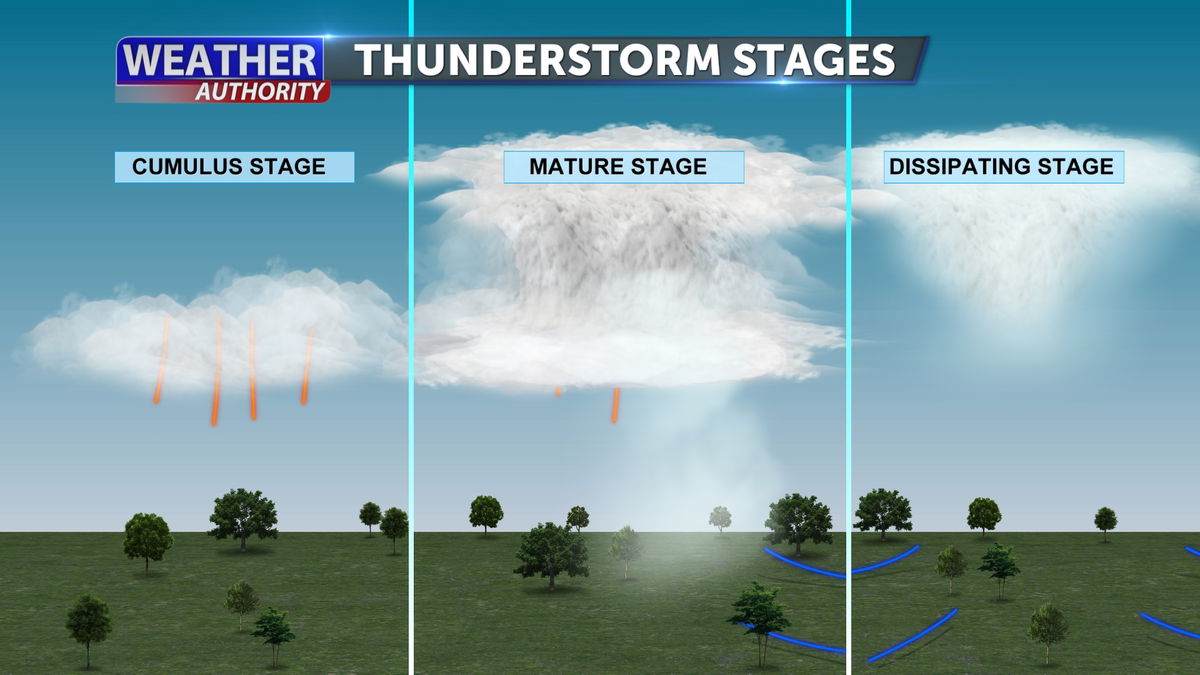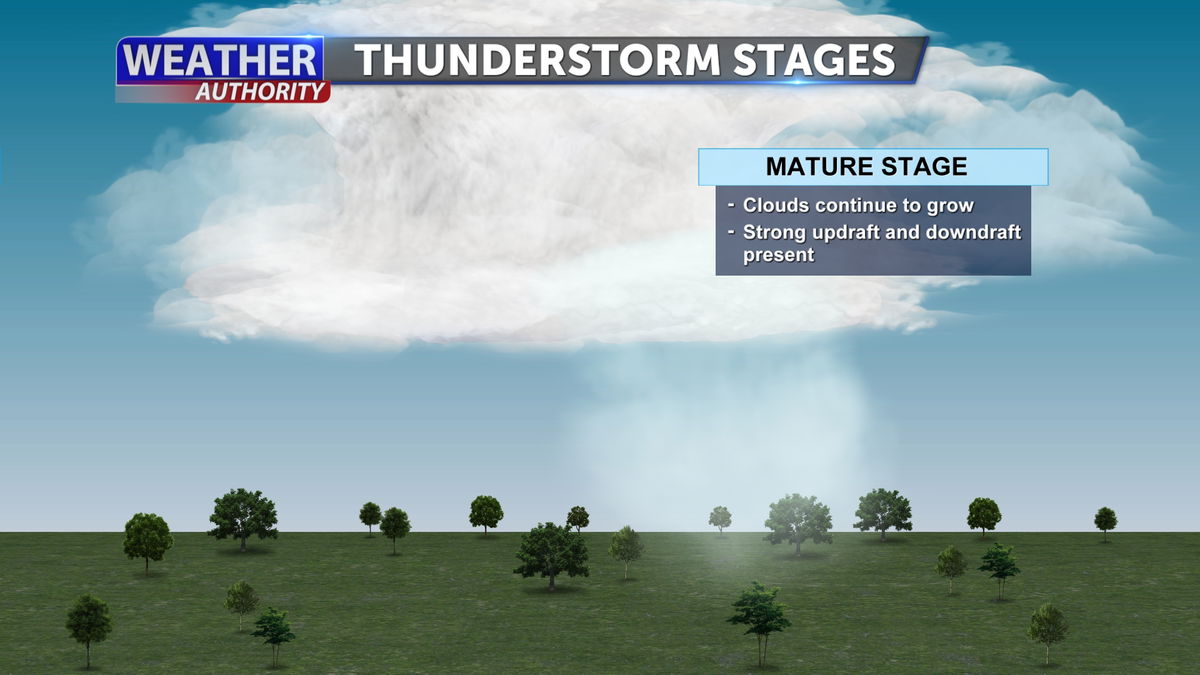Weather Authority Insider Blog: Thunderstorm stages and the process

YUMA, Ariz. (KYMA, KECY-TV) - A thunderstorm is a rain shower during which you hear thunder. Since thunder comes from lightning, all thunderstorms have lightning.
Three basic ingredients are required for a thunderstorm to form, which include moisture, rising unstable air (air that keeps rising when given a nudge), and a lifting mechanism to provide the “nudge.”

Most thunderstorms form in three stages which include the developing stage, when storm clouds form; the mature stage, when the storm is fully formed; and the dissipating stage, when the storm weakens and breaks apart.

The cumulus cloud soon looks like a tower (called towering cumulus) as the updraft continues to develop. There is little to no rain during this stage but occasional lightning.

The thunderstorm enters the mature stage when the updraft continues to feed the storm, but precipitation begins to fall out of the storm, creating a downdraft (a column of air pushing downward).
When the downdraft and rain-cooled air spreads out along the ground it forms a gust front, or a line of gusty winds.
The mature stage is the most likely time for hail, heavy rain, frequent lightning, strong winds, and tornadoes.

The downdraft cuts off the updraft. The storm no longer has a supply of warm moist air to maintain itself and, therefore, dissipates.
Light rain and weak outflow winds may remain for a while during this stage before leaving behind just a remnant anvil top.

